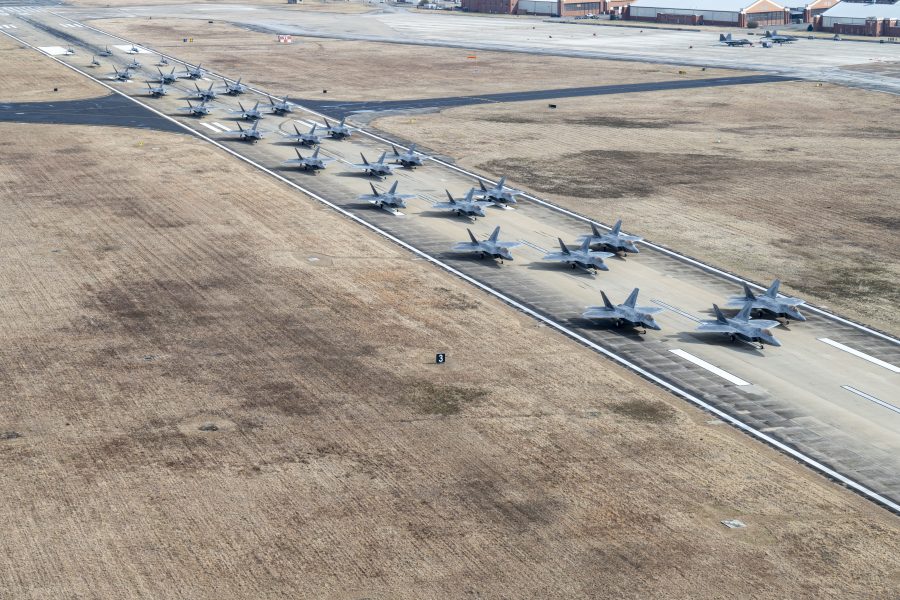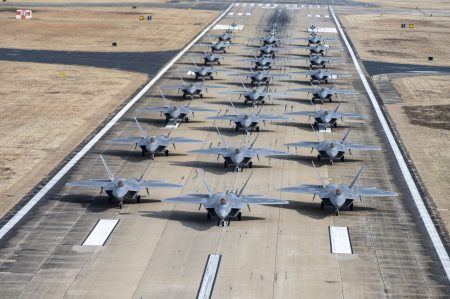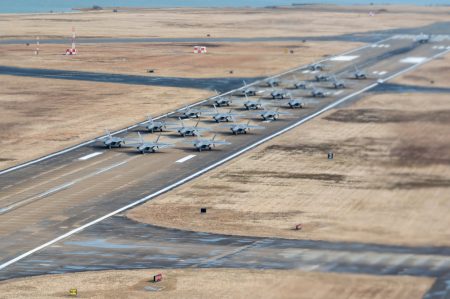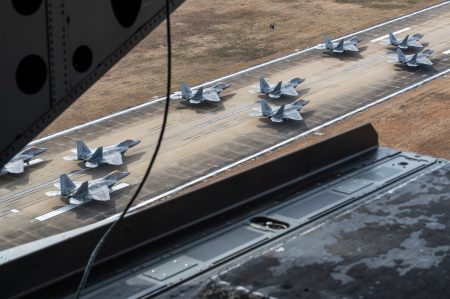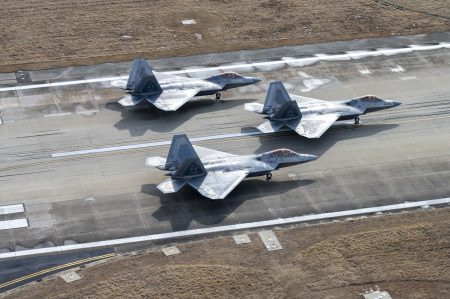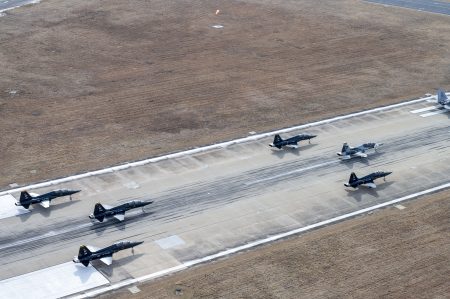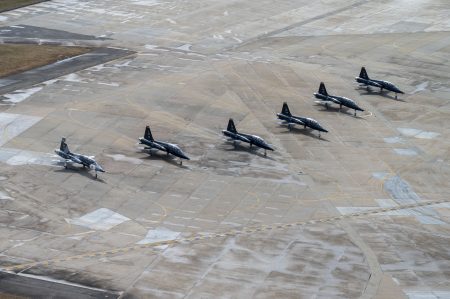More than one-eighth of the U.S. Air Force’s entire fleet of F-22 Raptors lined the runway at Joint Base Langley-Eustis, Va., on Jan. 31, as the 1st Fighter Wing flexed its ability to rapidly put airpower into action.
The “elephant walk” featured 24 F-22s plus six T-38 Talon trainers, tying the mark for the largest F-22 elephant walk in service history.
“This demonstration highlighted the wing’s ability to mobilize forces rapidly in high-stress scenarios,” the wing said in a statement. “As Air Combat Command’s lead wing, the [1st Fighter Wing] maintains unparalleled combat readiness to ensure national defense at a moment’s notice.”
According to data from fiscal 2023—the most recent year available—the Air Force has 185 Raptors, meaning the elephant walk featured nearly 13 percent of the fleet. And the fleet’s mission capable rate for that year was 52 percent, meaning that at any given time, around 100 fighters are available to carry out at least some the aircraft’s assigned missions.
Elephant walks typically require major efforts from maintainers to render a majority of a unit’s airpower ready to go. The wing did not immediately reply to a query on how the exercise stressed the unit’s ability to surge.
The 1st Fighter Wing includes the 94th and 27th Fighter Squadrons, which fly the F-22, and the 71st Fighter Training Squadron, which flies the T-38s as companion trainers and sparring partners for the Raptors.
Langley Air Force Base also hosts the flying training unit for the F-22, having inherited that mission in 2021, after Tyndall Air Force Base, Fla., was devastated by Hurricane Michael.
The Air Force is in the process of upgrading about 148 of its F-22s with new equipment, such as low-drag stealthy fuel tanks to increase their range; infrared search-and-track devices to widen its ability to detect stealthy aircraft; communications and navigation upgrades, and electronic warfare improvements.
The F-22 is also likely to partner with autonomous Collaborative Combat Aircraft, which can carry extra missiles for the Raptor, and the Air Force is developing a new long-range missile—the AIM-260 Joint Advanced Tactical Missile—to extend the Raptor’s ability to shoot enemies from a far greater distance.
The Air Force planned to retire the F-22 around 2030 due to its technologies being overtaken by adversary types, but the recent “pause” on the Next-Generation Air Dominance fighter program, which was meant to replace the F-22, means the Raptor may serve well into the 2030s.
The Air Force has asked Congress to allow the retirement of 32 F-22s that are used only for training, saying it would rather put the money used to operate those aircraft toward upgrading the rest of the fleet, but Congress has blocked the move for several years.
